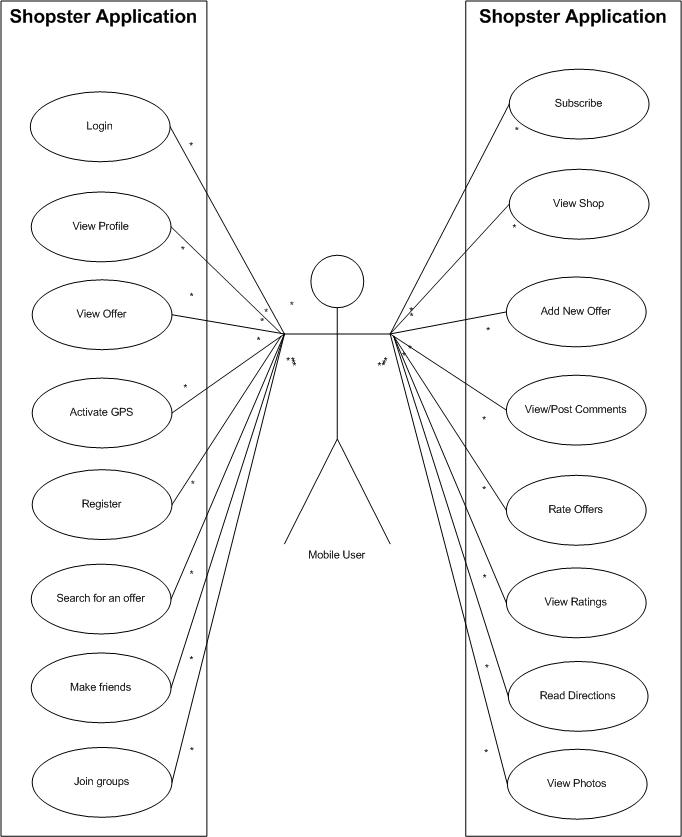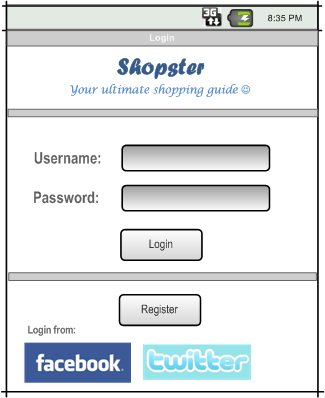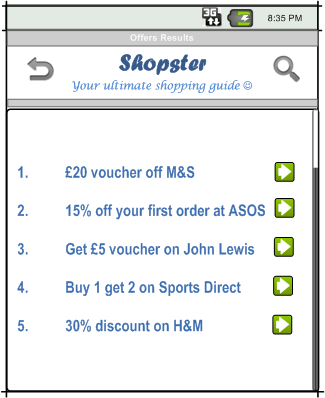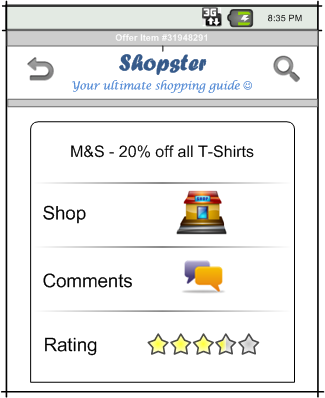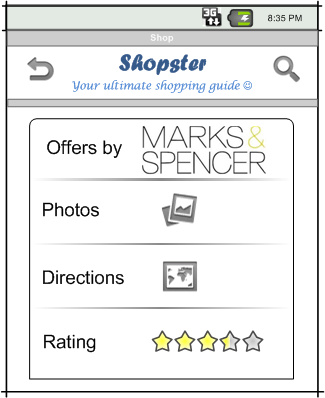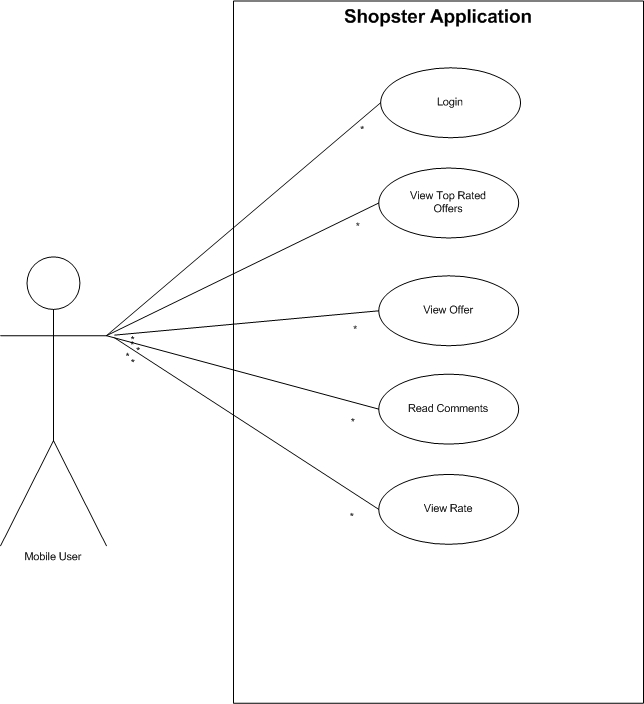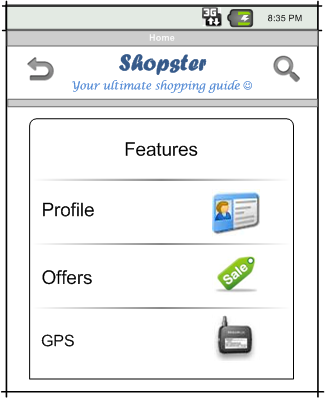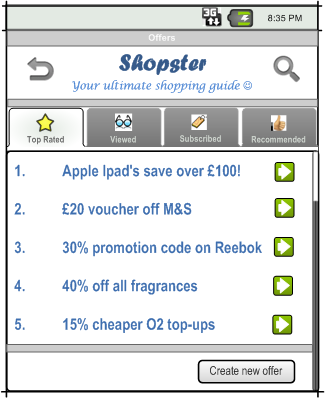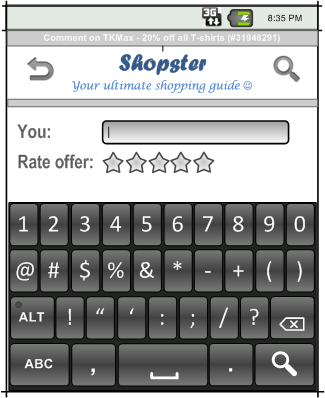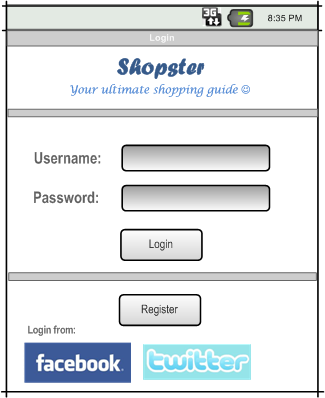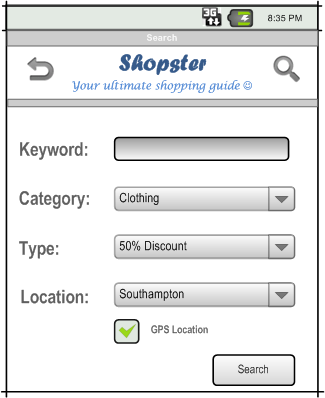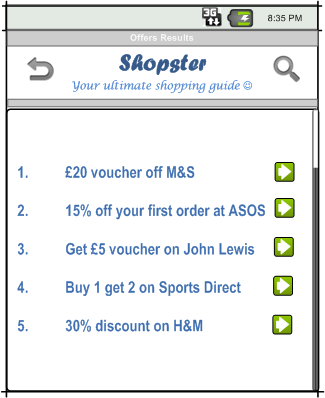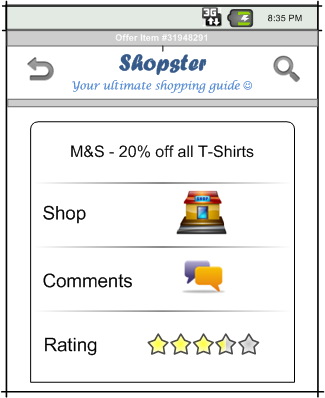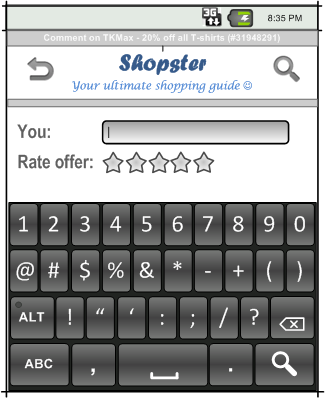Our initial plan and goal was to have a prototype of Shopster ready until the Dragon’s Den Pitch, but due to limited time we were not able to do that. However, it is possible to be implemented as a working project in a small amount of time.
We would implement the first version of Shopster using Android SDK, because the majority of our team is an Android-device holder. Android could give us the initial blossom to the application due to the fact that it is used in a big number of different devices as Operating System. We could also make a version for iPhones but this is can be done in the future, depending of the success of the initial application. Existing third-party APIs can be used to get some information and data for our application, such GPS locations for shops from FourSquare, Facebook’s and Tweeter’s APIs for users to connect to them and ProductWiki’s API in order to give some information about every single product of each offer (if the offer is for a specific product). These actions imply short implementation time and minimum effort for development and operational maintenance.
In order to have some initial offers in the system, we would post some offers ourselves. Without any initial offers we will not going to be able to attract any users. Another way to attract users is the use of the reward system and the free-registration of the normal users in the application.
An application like Shopster must be in some ways profitable. We would use the “freemium” model in order to generate profit. These ways are well explained in a previous post, the “Potential Profit through Shopster”
Concluding we can clearly say that our project is more than capable to be implemented and be used in the real world.
